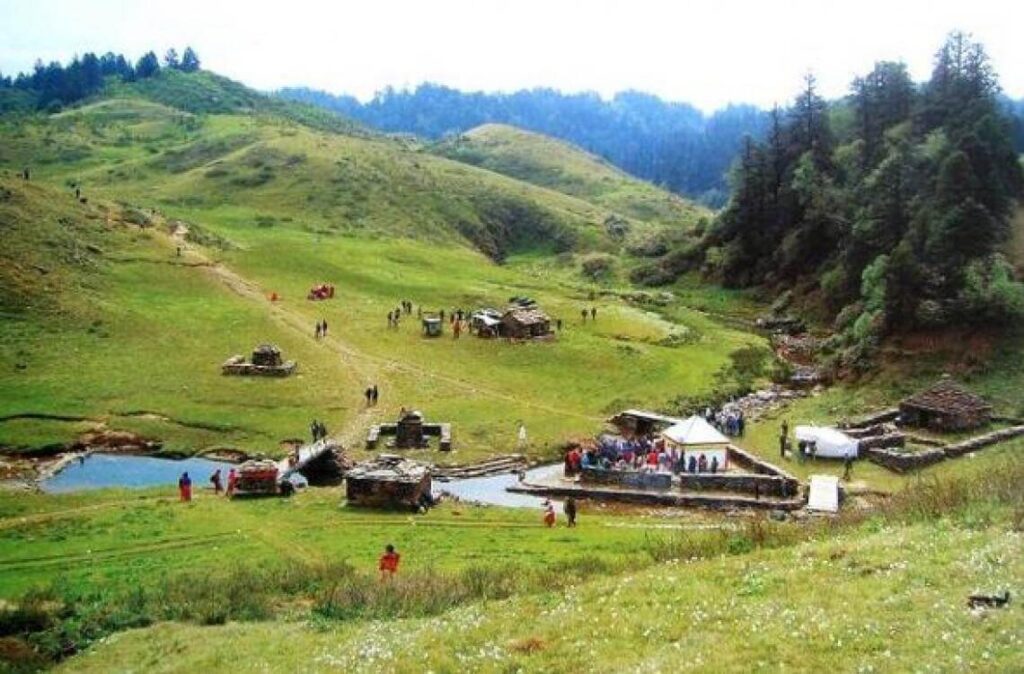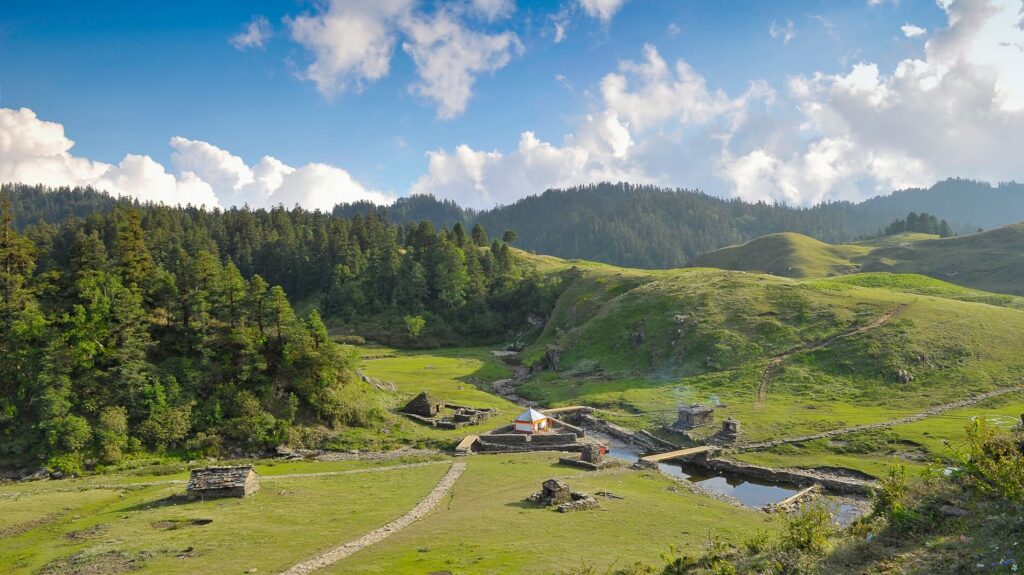Khaptad Lake is situated in the Doti district, the western part of Nepal. It is located at an elevation of around 3050m. It is regarded as one of the most picturesque natural wonders of Nepal’s far western region.
Surroundings of Khaptad Lake
The lake is surrounded by lush alpine meadows, dense pine forests, and the rugged peaks of the Saipal Hiaml range. Khaptad Lake presents a breathtaking view of Himalayan landscapes. The pristine, mirror-like surface of the lake reflects the snowy peaks that tower above which creates an awe-inspiring scene. The lakes maintain a vibrant precious green color that shifts with the changing light throughout the day.

The area is compared with the Khaptad National Park which was established to protect the area’s unique biodiversity and ecology. There you can witness the cultural villages.
Sacred Pilgrimages
For devout Hindus and Buddhists, making the arduous trek to Khaptad Lake is considered a sacred pilgrimage.
Visitors can participate in rituals and ceremonies at the lake’s holy sites, seeking blessings from the divine waters.
Khaptad National Park
Khaptad National Park is a protected area located in western Nepal. It was established in 1984. It covers about 225 sq km of the park. The buffer zones span 216 sq km in total. Khaptad National Park represents a distinctive and significant ecology. It is the mid-mountain national park in the west found in Nepal.
The reason behind keeping the name of the national park according to folks is in the 1940s. the Khapatad swami settled in the region for his worship and meditation. He became well-known as a spiritual saint after living as a hermit for almost 50 years.
Also Read: Things you don’t know about Khaptad National Park
Khaptad National Park holds cultural and significance for the local Khas and Magar communities. The area is specked with ancient temples, monasteries, and religious sites that attract religious visitors from different places. Visitors have the opportunity to immerse themselves in the area’s living traditions, witnessing rituals and ceremonies that have been passed down for generations. The place celebrates a festival known as Purnima, which takes place between the August – September full moon.
the national park headquarters include a view tower and a small museum. The saipal Himalayan ranges are visible to the north, while the vast, verdant Nepalese mid-hills are visible to the south. Within the park, there are 22 open areas where people of this area used to graze their animals.
Cost to visit Khaptad National Park
We offer you the best package to visit the park, the package we offer is US$789 per person. our package cost includes private vehicles, food and beverages, accommodation, jungle Safari/Activities as above mentioned in the description, Staying overnight in Forest Hideaway Resort, and so on.
Khaptad Lake Flora and Fauna
The park is blanketed in lush coniferous forests, primarily consisting of pine, fir, and spruce trees. Vibrant rhododendron shrubs burst into bloom during the spring, splashing color across the landscape. Alpine meadows in the higher elevations are carpeted with a variety of wildflowers, including primulas, gentians, and anemones. Medicinal herbs and plants like mycorrhiza, cordyceps, and yarsha gumba are also found in the park.

Khaptad National Park provides habitat for several endangered mammal species, including the Himalayan black bear, clouded leopard, and Asiatic wild dog. Other large mammals that can be spotted include the Himalayan tahr, Himalayan serow, and Himalayan goral. The park is home to diverse bird species like the imperial pheasant, Himalayan monal, and blood pheasant. Smaller creatures like the Himalayan pika, Himalayan field mouse, and various reptiles and amphibians also thrive in the park’s ecosystems.
The best time to visit Khaptad Lake
The best season to visit Khaptad Lake is during spring (March-May) and fall( October – November). Trekking is enjoyable throughout the nice temperature ranges of 100 c to 20 0 c. The rainy season, which lasts from June through September, causes muddy and slick walkways. Winter brings snow and chilly wind from December to February.
Things to do at Khaptad Lake
Trekking and Hiking
Trekkers can follow well-marked trails that wind through natural grasslands, dense pine forests, and along the shores of the serene lake. The challenging hikes offer unparalleled views of the Saipal Himal range and the chance to spot rare Himalayan wildlife.
Witnessed the beautiful Cultural
Khaptad Lake holds deep spiritual significance for the local Khas and Magar communities. Visitors can visit ancient temples, monasteries, and ashrams to witness religious ceremonies and rituals, gaining insight into the rich cultural heritage of the region.
You may also like: Phewa Lake: Nepal’s Second Largest Freshwater Lake
Interacting with the friendly villagers provides opportunities to learn about their traditional livelihoods and customs.
Nature Photography
With its pristine emerald waters reflecting the surrounding snow-capped peaks, Khaptad Lake is a photographer’s paradise. The dramatic landscapes, colorful wildflowers, and diverse flora and fauna offer endless opportunities to capture the breathtaking beauty of this remote corner of Nepal.
Let our expert team at Asian Heritage Treks and Travel take care of everything — from guided tours to personalized packing tips and travel arrangements.
Plan an exciting trip







